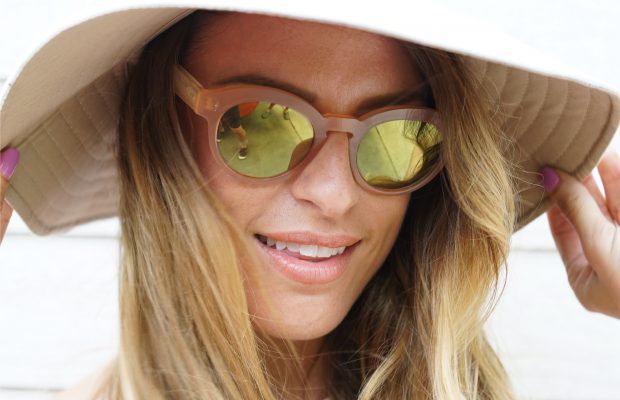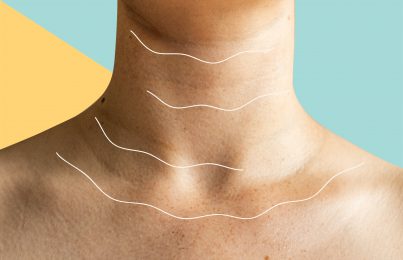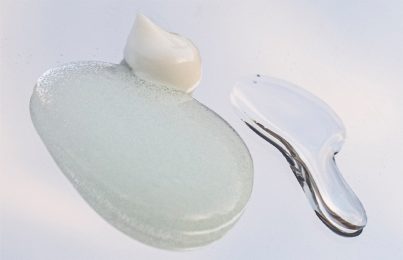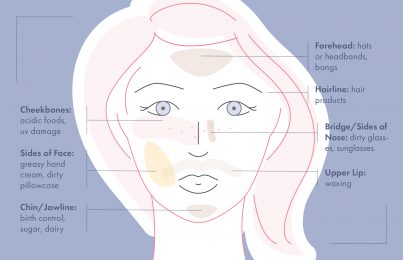Updated 07/05/22. Now more than ever, people are getting a jump on preventative aging. They’re leading healthy lifestyles and practicing good skincare habits now in order to get a big payoff later. Trust me when I say that this is the best way to ensure youthful-looking skin that shows fewer lines, wrinkles, and brown spots. After all, it’s much easier (and less expensive) to prevent wrinkles than it is to get rid of them once they appear.
- My 10 Best Tips for Preventing Wrinkles
- 1. Reassess Prescription Medications for the Skin
- 2. Moisturize Consistently
- 3. Use Products Formulated Exclusively for Your Skin Type
- 4. Be Mindful of How You Sleep
- 5. Get Serious About Sun Protection
- 6. Treat Your Neck as an Extension of Your Face
- 7. Use an Eye Cream and an Under-Eye Exfoliator
- 8. Use Retinol or a Prescription Retinoid
- 9. Use a Botox-Free Alternative for Preventing Wrinkles
- 10. Put Your Skin in the Hands of a Professional
In this post, I’ll share 10 easy tips you can follow to prevent wrinkles. These tips apply to everybody, no matter their age. Keep reading to see them all!
My 10 Best Tips for Preventing Wrinkles
1. Reassess Prescription Medications for the Skin
The most common prescription medications people take for their skin include oral antibiotics, birth control pills, and retinoids. Doctors often prescribe these to help clear blemishes. As you get well into your 20s, though, these medications (with the exception of retinoids) can negatively impact the appearance of the skin. That’s because dryness, irritation, and/or pigmentation are all common side effects of these medications, and these are never good for your skin—or your goal to prevent wrinkles.
Note: prescription retinoids can actually help prevent wrinkles by improving skin texture and promoting collagen production. Even though they can cause unwanted dryness and irritation, these side effects can be managed—even avoided—if they’re used correctly and consistently. Read my beginner’s guide to using retinol and retinoids to learn more.
Of course, you should never stop using a prescription medication without consulting your doctor. Make sure to speak with them before making any changes. After all, it’s of the utmost importance that you use prescription medications properly, according to instructions and your doctor’s orders.
Oral and Topical Medications for Blemishes
Are you still using breakout-clearing medications and products that were prescribed to you in your younger years? Do you fear that if you go off of them, your teenage breakouts will come back? Well, in a lot of cases, by the time people get into their mid to late-20s, they have outgrown severe, hormone-induced breakouts. That means these types of medications and products are no longer necessary. And why continue to use these if you don’t need them?
The goal is to create a balanced environment so your skin can look its best and slow down the development of visible signs of aging—like wrinkles!
Birth Control Pills
Did you know that birth control pills can increase skin pigmentation on the cheeks, forehead, and above the upper lip? A lot of people wonder why they start to see dark shading and patches of brown pigment appear on their skin. Oftentimes, this melanin production can be due to hormonal changes caused by birth control pills. This condition, which is known as melasma, can occur at any time. The longer the pigmentation sticks around, the more difficult it can be to get rid of later on.
If you’re using birth control pills as a way to manage breakouts, and you’re experiencing pigmentation, talk with your doctor. They may suggest changing it up or switching to a different type. Learn more about how birth control pills affect the skin.
Prescription Retinoids
One of the greatest discoveries in the world of skincare was when an FDA-approved topical cream that was developed to minimize breakouts was, in fact, doing double duty as a wrinkle prevention product. You can read all about that here (it’s a great story!).
If you experienced severe breakouts and were prescribed a retinoid to address them, consider yourself lucky. You got a serious jumpstart on wrinkle prevention as a result. I highly recommend you keep it using it (but more on that in a minute).
2. Moisturize Consistently
What many people don’t realize is that a basic moisturizer—even one that doesn’t include a lot of active ingredients—is inherently anti-aging. That’s because moisture helps support and plump up your skin cells, helping to prevent the formation of wrinkles (yes, really!). Dry, damaged skin is more prone to showing visible signs of aging, so moisturizing consistently is key.
I often hear people with breakout-prone skin say they avoid moisturizer to let their skin “breathe” and/or to prevent breakouts. This is doing more harm than good. First of all, your skin doesn’t respire, so the idea that it can breathe is inaccurate. Even if you’re using the word breathe to mean you don’t want your skin to be occluded, meaning you don’t want something blocking your pores, skipping moisturizer isn’t the answer. Instead, you just need to use a lightweight formula. It’s all about choosing the right moisturizer for your skin type.
You should also avoid over-exfoliating and using harsh breakout-focused products. This could be harming your skin’s moisture barrier. Your moisture barrier is your first defense against dry, dull, and damaged skin. When it’s impaired, your skin will be more likely to show visible signs of aging with time (like wrinkles).
Read the difference between dry and dehydrated skin.
3. Use Products Formulated Exclusively for Your Skin Type
I’ve been an esthetician for over 30 years, so trust me when I say the standard dry, normal, and oily skin types just don’t cut it. They simply can’t cover the variety of skin concerns that people have. And actually, most products that are created for these basic skin types only address one skin concern—often to the detriment of others. What if you have breakouts AND sensitivity? Or, dryness AND sun damage?
You need to use products that address multiple concerns at once and work synergistically to achieve your goals. That’s why I developed 9 Skin Types. Each one has its own effective product collection to care for your unique skin. (If you don’t know your skin type, take the Skin Type Quiz to find out. At the end of it, you’ll get personalized product recommendations. It takes all the guesswork out.)
Read three ways to tell if your skin type has changed.
4. Be Mindful of How You Sleep
Did you know that sleep, or the way you sleep, is considered to be a major cause of wrinkles? The position of your face on your pillow can make a big difference. In fact, as an esthetician, I can often tell just by looking at someone whether they sleep on their side or their back.
Here’s how I tell. Side sleepers often have creases on their chests. They also often have a vertical line in the area where their nose and cheek meet, called the nasolabial fold (I see this most often in men). Back sleepers, on the other hand, tend to have deep horizontal lines on their neck. This happens when the chin pushes the skin on the neck down.
For me, I choose to sleep on my side with my head positioned in the bottom corner of an extra firm pillow. This positions my head so the lower half of my face is off the pillow, helping prevent wrinkles in the nasolabial fold. It also keeps my neck straight, so I can avoid those horizontal lines and wrinkles that often result from sleeping on your back.
I know many of you think that you can’t really control how you sleep, but I challenge you to give it a try. You might even consider trying new pillows designed for side sleeping. The right pillow can make a big difference!
Read the best way to sleep on your pillow to prevent wrinkles.
5. Get Serious About Sun Protection
This is hands down the most important tip for preventing the formation of wrinkles. Sunscreen, when applied consistently and generously, is the MOST effective way to prevent visible signs of aging. In fact, it’s the most effective “wrinkle cream” on the planet, since daylight can cause a considerable amount of damage to your skin without you even realizing it.
Many people still don’t apply sunscreen every day. They think just because it’s rainy or cloudy, or they’re not going outside, they don’t need it. This simply isn’t the case. You should apply sunscreen 365 days a year, rain or shine.
If you struggle to find a sunscreen that’s compatible with your skin type (many of them can feel heavy and greasy or clog pores), I suggest using Weightless Protection SPF 30. It’s nice and lightweight and won’t cause problems for breakout-prone skin types.
Read the best way to apply sunscreen to your face and neck.
6. Treat Your Neck as an Extension of Your Face
When it comes to aging, the skin on your neck is already at a disadvantage. There is less bone structure to support the skin than there is in the face. In your quest to prevent wrinkles, you want to pay special attention to how you care for your neck. Don’t treat it as an afterthought. For example, a person will typically apply moisturizer onto their face, and then rub whatever is left over on their neck. This isn’t helping keep the skin tight and smooth. You must apply your skincare products to your neck in the same way you would apply them to your face. That’s especially true with sunscreen. Your neck needs a separate application of SPF.
I’m always sure to apply a neck cream at night. The product I use is the Intensive Firming Neck Creme. I formulated it with peptides, antioxidants, and algae extract to firm, moisturize, and de-puff the skin on the neck.
One more thing… There’s also the issue of “tech neck.” This refers to lines and wrinkles that result from looking down at cell phones and computers all the time. The idea is that the angle at which you hang your head causes a repeated fold of the skin that encourages wrinkles to form. An easy way to prevent these wrinkles from forming (or getting worse) is to adjust your position. Instead of looking down at your screen, keep your screen at eye level.
Read expert-approved ways to get rid of tech neck.
7. Use an Eye Cream and an Under-Eye Exfoliator
Did you know that the eye area is often the first area to show visible signs of aging (including wrinkles)? Keeping it hydrated and nourished is essential for preventing premature lines and wrinkles. The best way to do that is to use an eye cream. Don’t choose any old eye cream, though. If the formula is heavy or greasy, it could actually cause wrinkles by seeping into the eyes and causing puffiness. Over time, the puffiness can stretch the skin and weaken its elasticity.
Instead of heavy eye cream, I recommend using a lightweight one with skin-firming peptides, like the Renée Rouleau Total Eye Repair Creme. Every now and then, you’ll want to gently exfoliate the under-eye area before applying eye cream. This will improve the look of dry, crepey skin and help your eye cream to penetrate deeper and work more effectively since it won’t have to break through dead skin cell buildup.
Read how to gently exfoliate the under-eye area.
8. Use Retinol or a Prescription Retinoid
Aside from sunscreen, this is the most effective product for preventing wrinkles. Retinol and prescription retinoids can improve and even reverse the visible signs of aging—including post-breakout marks, enlarged pores, brown spots, and yes, wrinkles. They do this, in part, by encouraging collagen production and thickening the deeper layers of the skin.
There are many different types and strengths. If you’ve never used a retinoid before, I suggest starting off with a non-prescription option, like retinol. That is unless you’re over the age of 35 and you’re looking to get serious about skin aging. Then, I would suggest starting off with a prescription. But it all depends on your skin and your specific goals.
I always recommend the Renée Rouleau Advanced Resurfacing Serum. It contains 0.4% microencapsulated retinol to target lines and wrinkles. I formulated it with sensitive skin types in mind, so it won’t cause the dryness and irritation that other retinol products might.
Read the different types of retinoids and how they affect the skin.
9. Use a Botox-Free Alternative for Preventing Wrinkles
I get asked all the time by people in their 20s, “Do you think I should start getting Botox to prevent wrinkles?” I generally don’t think it’s a good idea for most people in their 20s to start getting Botox unless it’s needed (read more about that here). However, I do believe it’s perfectly safe. I personally get Botox between my brows and around my eyes.
A much less expensive option for the prevention of wrinkles is wearing facial patches while you sleep. I know it seems a bit silly, but it does work. By applying these easy-to-use patches that freeze your expressions, you’re actually doing a lot to prevent the formation of wrinkles.
Read what to know before getting Botox or fillers.
10. Put Your Skin in the Hands of a Professional
While a good at-home skincare routine is essential, your skin can benefit greatly from professional treatments like facials, lasers, and chemical peels. Not only would you be getting a treatment that will target your wrinkle concerns, but you’d also be getting guidance from an expert. When people attempt to go it alone, they often get confused and end up using a routine that isn’t delivering results.
There you have it. These 10 tips will help prevent wrinkles and set you up for a lifetime of youthful-looking skin! Don’t rely on good genetics to carry you through. Good skincare habits are everything!
Next, waiting for results? Here’s how long it takes different skincare ingredients to work.
Celebrity Esthetician & Skincare Expert
As an esthetician trained in cosmetic chemistry, Renée Rouleau has spent 35 years researching skin, educating her audience, and building an award-winning line of products. Her hands-on experience as an esthetician and trusted skin care expert has created a real-world solution — products that are formulated for nine different types of skin so your face will get exactly what it needs to look and feel its best. Trusted by celebrities, editors, bloggers, and skincare obsessives around the globe, her vast real-world knowledge and constant research are why Marie Claire calls her “the most passionate skin practitioner we know.”




Comments:
Hi!
I have a question about frownies – if you recommend wearing them before going for botox a few years later, does this mean you apply them to dry skin and then you forego what you would have been using on your forehead at night (for example retinol?)
Thanks!
Posted By: Dija |
Hello! Yes, you can use a serum and then apply the patch, it could help the serum penetrate! But you don’t want to apply cream because it will have a hard time sticking.
Posted By: Ella Stevenson |